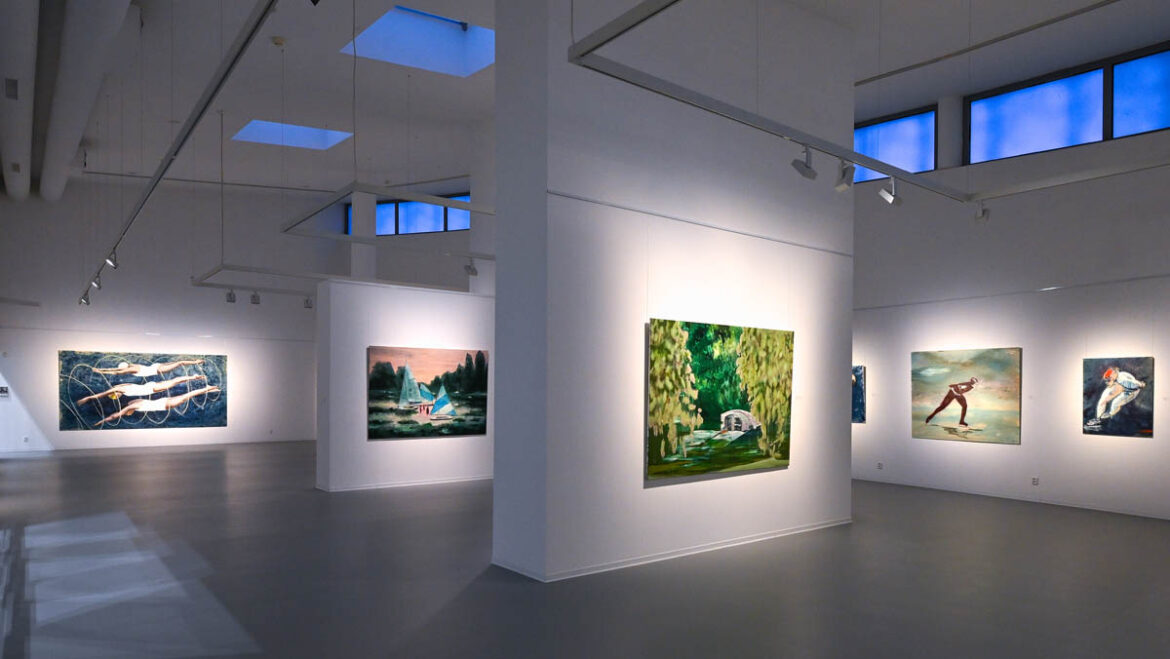
For example, jumping into water, which is connected with a sudden change of elements, is conceived and presented not only as an elegant physical movement, but also as a transformative experience, a beginning. The existential experience of the individual, which has more validity, is uncovered in elementary gestures, in the transformations of the figure, and its configurations and confrontations with the environment. A climbing wall is not only an apparatus for physical exercise, but a symbolic challenge to overcome obstacles in pursuit of a goal. In the same way, raising a sail on a ship is an allegory of perseverance in the face of adversity. The motifs of sailing and navigation are in turn related to life expectancy and orientation.



And the grid of the mosaic, the exterior paneling of the walls of the house, is the essence of Mésároš’s childhood memories. It represents security, order, a stable arrangement of shapes, a remembered feeling of home and an unchanging haven in a changing world. Her variations and fragmentation depict the disintegration of the image and the gradual disappearance of memories. Her ambient and imaginative paintings of the landscape are also metaphorical and connected to the creation of home and the search for identity. Kristína Mésároš’s paintings form a cyclical movement between moments of concentration, tension, performance, inspiration and subsequent relaxation, dreaming, and meditation. They express the effort to fill existence with meaning and joy.


About Kristina Mésároš: Slovak painter Mgr. art. Kristina Mésároš, ArtD. (1981) lives and works in Scharndorf, Austria. She studied at the Academy of Fine Arts and Design in Bratislava and received a scholarship to study at the Lasalle College of Arts in Singapore before she completed her doctoral studies at the Department of Printmaking and Other Media in the studio of prof. Vojtech Kolenčík. She won the Martin Benka Award in 2023, and was a finalist in 2009 (Strabag Artaward International), and 2013 and 2015 (VÚB Foundation Painting of the Year Award). She has participated in several foreign residencies, and group and solo exhibitions at home and abroad. Her existential experience is revealed in the transformation of figure and landscape. Personal experiences, ephemeral situations, the perception of changes in the landscape, but also the emergence of old memories, are connected through her painting with the abstraction of feelings, moods, and the search for a deeper meaning.
Exhibition: Kristína Mésároš – ORIGIN curated by Peter Megyeši
Exhibition duration: November 2024 – 02. February 2025
Note: In September 2023, we already interviewed Kristína. You can find it here.
Address and contact:
Danubiana Meulensteen Art Museum Bratislava-Čunovo
Vodné dielo P.O.BOX 51, 851 10 Bratislava-Rusovce
www.danubiana.sk




